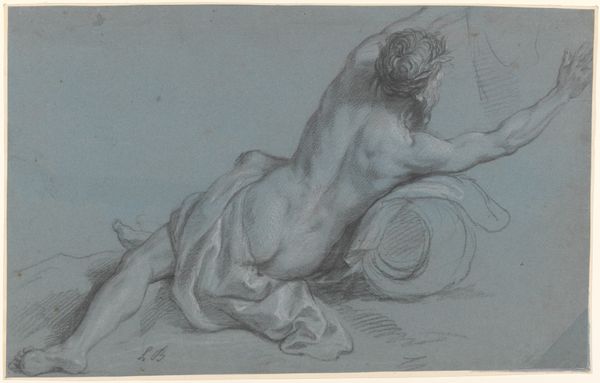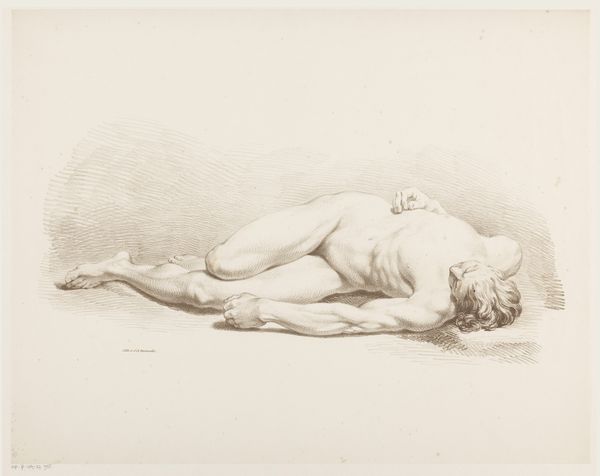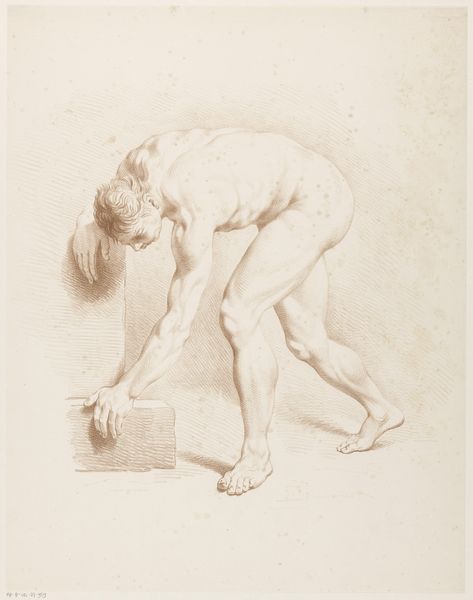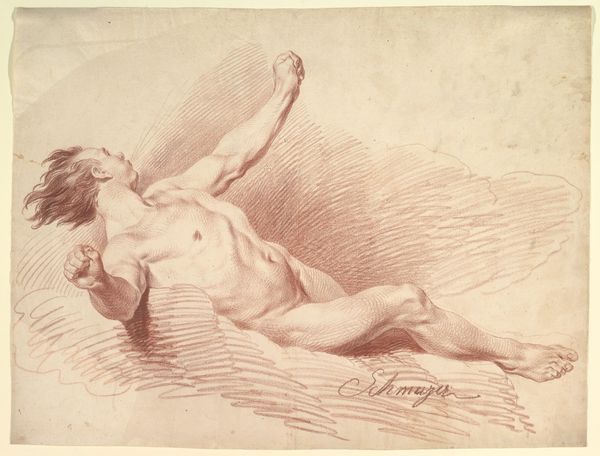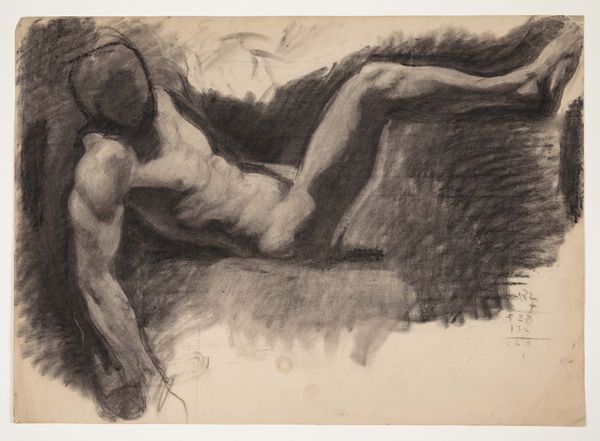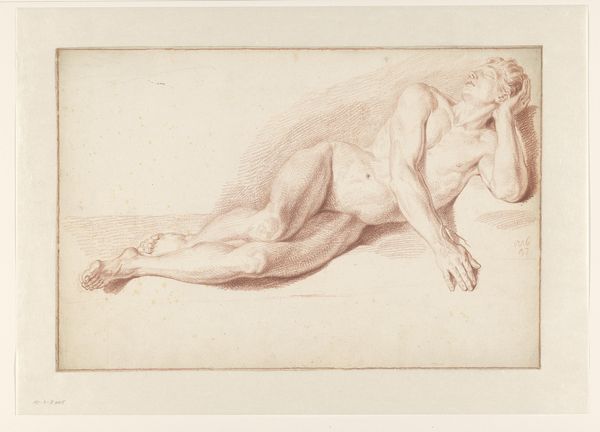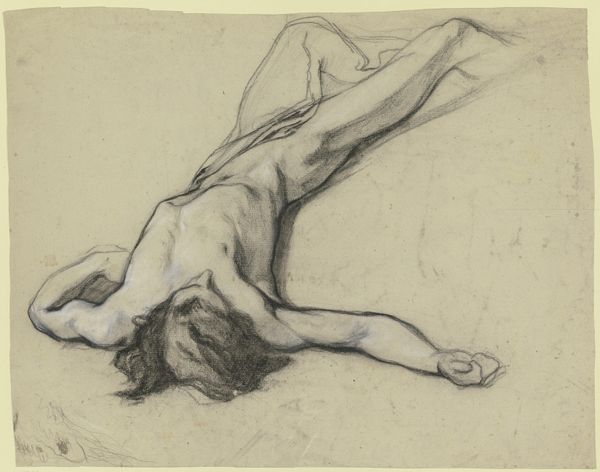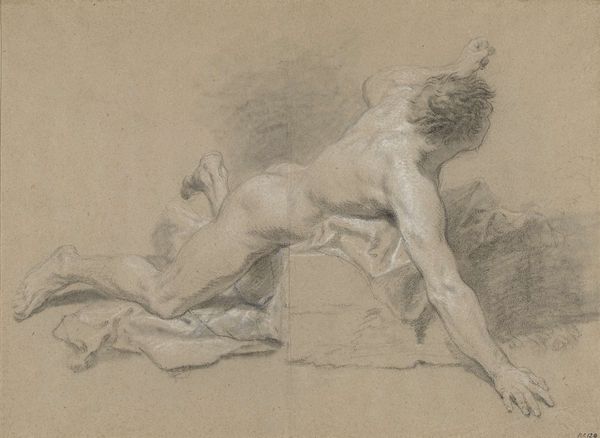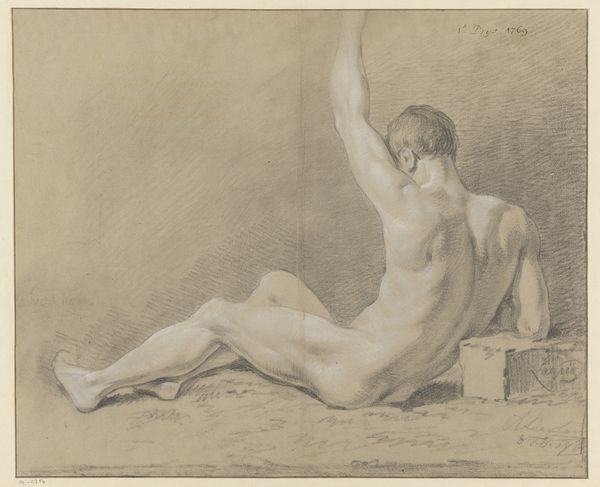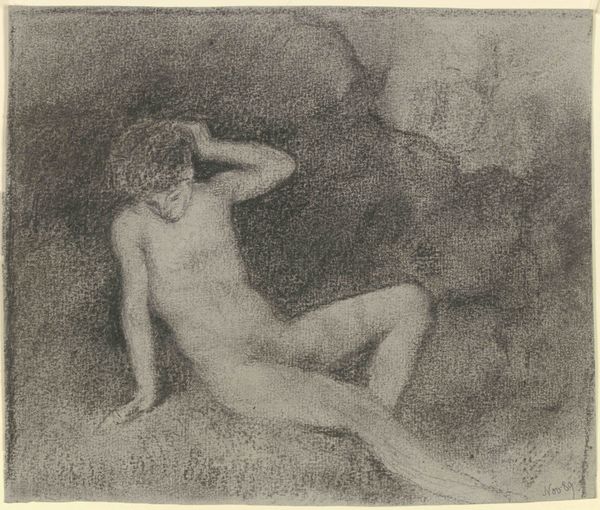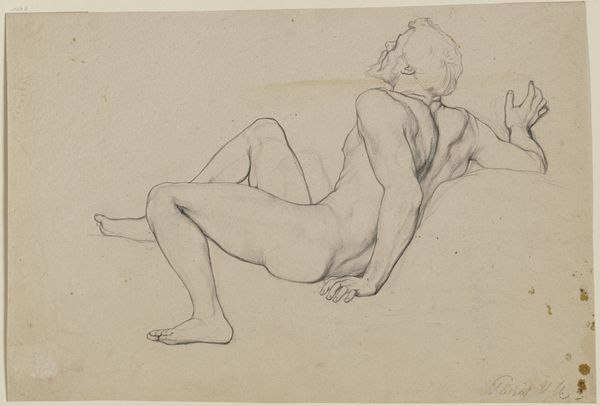
Liggende model på plint med pude. Mod højre. Højre arm hængende udover plinten. Venstre arm under hovedet. Langt nedhængende hår 1778 - 1809
0:00
0:00
drawing, pencil, charcoal
#
portrait
#
drawing
#
classical-realism
#
charcoal drawing
#
pencil drawing
#
romanticism
#
pencil
#
portrait drawing
#
charcoal
#
academic-art
#
nude
Dimensions: 402 mm (height) x 533 mm (width) (bladmaal)
Editor: Here we have a drawing, "Liggende model på plint med pude" created between 1778 and 1809 by an anonymous artist. It looks like a pencil and charcoal study of a reclining nude male figure. There's a vulnerability in the pose, almost a melancholic mood. What do you see in this work? Curator: I see a visual echo of classical ideals filtered through a romantic lens. Consider the historical fascination with the reclining nude, a symbol laden with connotations of beauty, power, and vulnerability. How does the anonymity of the artist, in your opinion, affect our reading of this piece, devoid of a singular, declared vision? Editor: That's a great point. Perhaps the lack of a known author amplifies the universal aspects of the depicted figure. It feels less like a specific person and more like an archetype. Curator: Precisely. Notice how the downward-hanging hair almost veils the face, a symbolic act. What cultural associations do you make from the composition and the visible anatomical details? Does it resemble any mythological references to you? Editor: I think it’s meant to highlight the vulnerability in a rather intimate way, showing the sitter’s physical form while concealing the face. It's almost a figure of defeat, but his very musculature suggests heroism or even a god-like stature. There's something profoundly human about him in his slumped state. Curator: Absolutely. This tension is central to the drawing’s impact. It speaks to a very specific psychological moment: The hero after the triumph. By understanding its symbols we glimpse into a certain time and memory of the people of that era. What are your thoughts now, looking back? Editor: Thinking about your perspective, this piece embodies more than just a life study. It bridges classical ideals with Romantic sensibilities, echoing with symbolic layers that prompt broader questions. Curator: Indeed, the drawing serves as a powerful reminder of art’s ability to condense and convey meaning across epochs.
Comments
No comments
Be the first to comment and join the conversation on the ultimate creative platform.
